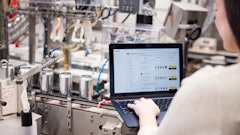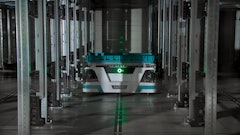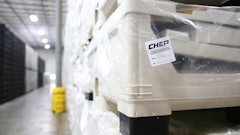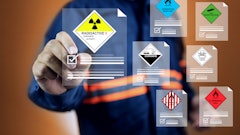
Every January, at the National Retail Federation’s “Retail Big Show” conference and expo, retail prognosticators get a glimpse at the cutting edge in retail technology for what the in-store and online shopping experience may be like in years – or even months – down the road. The pandemic era of 2020, however, has acted like an accelerant sprayed on a smoldering flame. We now live in an era where a hybrid of curbside pickup, online delivery, barcode scanning (to enable food traceability throughout the supply chain) and contactless store interaction are shaping the “New Normal” for consumer purchases of everything from food to electronics.
How else is technology changing the game?
The “store” is more than brick and mortar
If you’ve left your residence to shop in the midst of this pandemic (or watched one of the many commercials from companies portraying what their particular “New Normal” looks like), you’ve probably noticed how curbside pickup has moved from a secondary method of commerce to a primary one. It’s a natural transition when close physical contact has the potential to be deadly.
In the coming months, however, it will become increasingly clear that the curbside experience of today is just a starting point. Curbside pickup was something that only a select few customers took advantage of pre-pandemic. Now, as a standard operating procedure for many retail locations, a considerably larger percentage of retail customers are being exposed to the benefits of:
· Skipping navigation of large stores
· Avoiding long checkout lines
· No wasted time spent searching for items that may or may not be in stock
As they grow to rely on that convenience, shoppers will expect the rest of the in-store experience to follow. That means extending “in-store” to “just outside of the store.” Look for mobile technology to facilitate everything from digital signage to curbside returns and exchanges. “Browsing” will become something that can be done in real time on your mobile device as you wait in the pickup line. Most importantly, recreating the whole store experience curbside is the ultimate insurance against future store closures due to resurgent pandemic waves.
The smartest retailers are already preparing against sudden disruptions and redefining the “store” will be a critical part of it.
Let safety flow
A key component of retailers establishing any sort of “normal” – new or otherwise – will be re-establishing the bond of trust between them and their customers. Even when shoppers can afford to make discretionary purchases, low confidence in their safety while doing so constrains their spending at physical locations.
That means stores must take tangible measures to exhibit they’re serious about mitigating this threat such as:
Manage social distancing
Maintaining safe distances will be critical for both retailers’ own employees and their customers. While floor decals indicating 6-foot spaces have been a primary method in the early stages, retailers will have to be considerably more sophisticated to make this viable in the long run. A good example of what this looks like for employees was recently exhibited by Ford Motor Company. They combined Samsung smartwatches with RFID software to create mobile solutions that vibrate and warn employees when they are closer than six feet to another during shifts. Retailers may not be able to issue smartwatches to every shopper, but they can leverage reservation/queue systems not unlike OpenTable to strictly manage how many people are in the store at a given time.
Personal safety
In-store technology was already moving in the direction of being a more sensor-driven experience from smart shelves that monitor stock levels to cameras that help inform detailed heat maps on customer movement. The next horizon for that technology may be temperature checks for both employees and customers coming in. Previously, this simply meant infrared cameras, but accuracy for large, constantly-changing crowds may not be enough. Some state-of-the-art solutions, however, combine artificial intelligence (AI) technology with deep machine learning to not only identify at-risk customers, but also alert sales staff. Additionally, ultraviolet light-based solutions offer stores the means to continually disinfect high-touch areas such as kiosks and payment pads.
Contactless in-store commerce
Contactless payments are getting their time in the spotlight thanks to the onset of the COVID-19 pandemic. The total in-store experience, however, still contains a number of touchpoints that may require customers to be in more proximity with store associates than they are comfortable with. That’s why retailers are implementing shopping methodologies such as frictionless checkout. Here, customers scan their own purchases as they put them in their cart, then simply pay through the store’s app when they’re ready to leave or maneuver through a designated checkout lane and get charged through a digital wallet set up beforehand.
Invest in store associates
The store associates of today and tomorrow are critical to making this all work, but they need the technical support to make it happen. Smart retailers are already investing in the devices, apps, services and infrastructure to assist them with all of the training, disinfecting, customer management/social distancing, merchandising and more to make this “New Normal” a success. The smartest of those are also taking into account the support needed for these new capabilities in order to empower employees and rebuild consumer confidence.
No matter how flexible and advanced the capabilities of brick-and-mortar locations are going forward, it’s all for naught if patrons show up to non-functional devices, disrupted systems and hard-to-use solutions that stymie both associates and ready-to-buy customers. Only the stores that take a holistic approach to crafting an end-to-end mobility technology program to incorporate all of this will thrive during future disruptions.


















